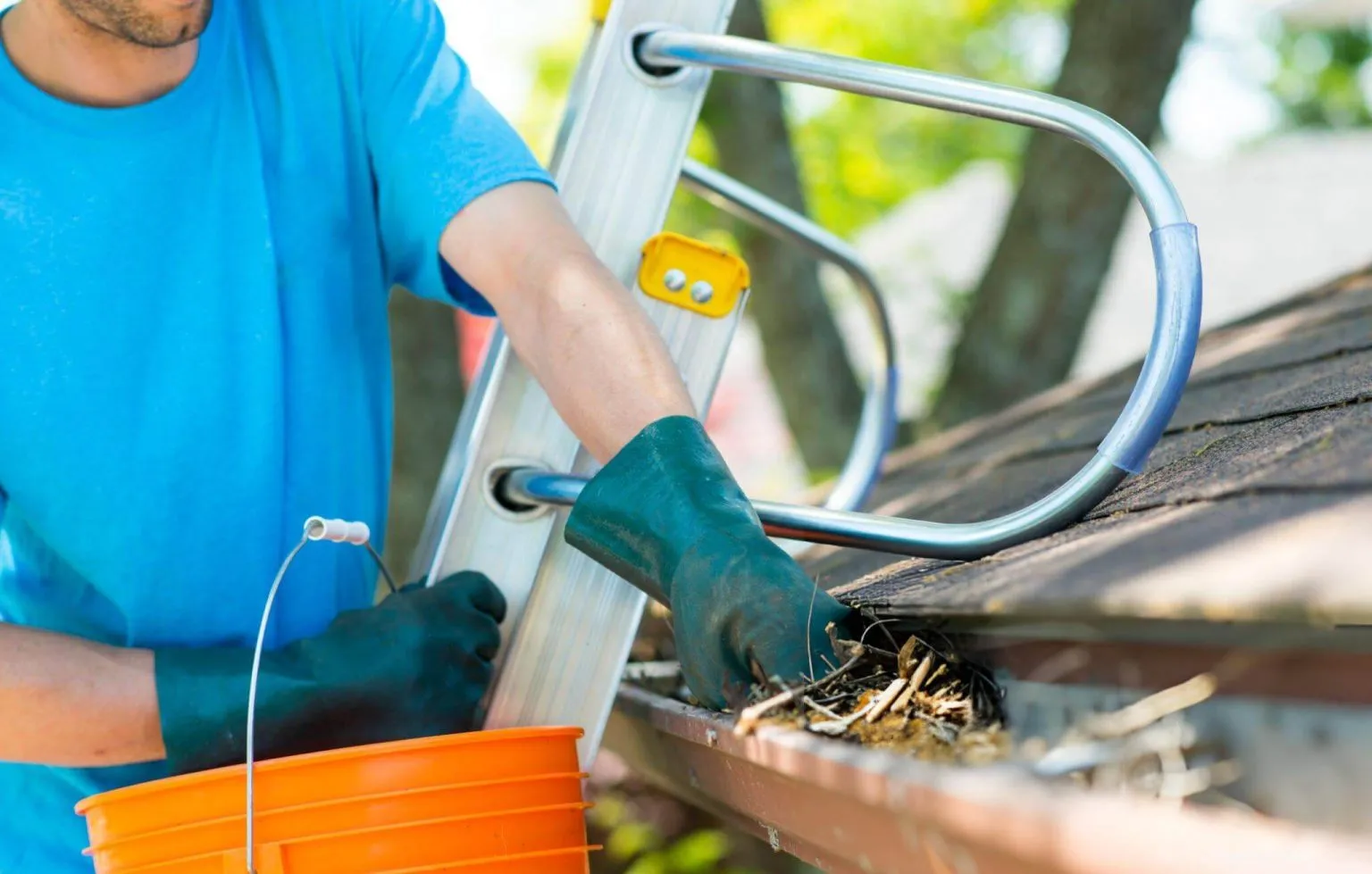
Gutters play a crucial role in protecting your home from water damage by directing rainwater away from the foundation, roof, and walls. However, when gutters become clogged with leaves, debris, and dirt, they can no longer function properly, leading to serious problems such as water damage, mold growth, and structural deterioration. In this comprehensive guide, we will discuss why gutter cleaning is essential, the risks of neglecting it, and the best practices for keeping your gutters clean and well-maintained.
The Importance of Gutter Cleaning
Gutter cleaning is a vital part of home maintenance that ensures water flows freely through your drainage system. Some key benefits include:
- Prevents Water Damage: Clogged gutters cause water to overflow, leading to damage to your roof, walls, and foundation.
- Reduces Pest Infestations: Stagnant water in clogged gutters creates a breeding ground for mosquitoes, rodents, and insects.
- Protects Landscaping: Overflowing gutters can cause soil erosion and damage plants, flowers, and grass around your home.
- Increases Lifespan of Gutters: Regular cleaning prevents rust, sagging, and wear and tear, extending the life of your gutters.
- Improves Home Aesthetics: Clean gutters enhance curb appeal by keeping your home’s exterior looking well-maintained.
Risks of Neglecting Gutter Cleaning
Failing to clean your gutters can result in costly repairs and significant structural issues. Here are some common problems caused by clogged gutters:
- Foundation Damage: Water that overflows from blocked gutters can pool around your home’s foundation, leading to cracks and instability.
- Roof Damage: Accumulated debris and standing water can cause shingles to deteriorate, resulting in leaks and roof damage.
- Basement Flooding: Excess water around the foundation can seep into the basement, causing flooding and mold growth.
- Mold and Mildew Growth: Moisture from overflowing gutters promotes mold growth, which can lead to health issues.
- Gutter System Failure: Heavy debris buildup can cause gutters to sag, detach from the roof, or collapse altogether.
How Often Should You Clean Your Gutters?
The frequency of gutter cleaning depends on factors such as climate, tree coverage, and rainfall. General guidelines include:
- Twice a year: Most homeowners should clean gutters in the spring and fall.
- More frequently: If you live in an area with heavy rainfall or trees shedding leaves, quarterly cleaning is recommended.
- Before winter: Removing debris before snowfall prevents ice dams and damage.
Signs That Your Gutters Need Cleaning
Watch out for these warning signs that indicate your gutters need immediate attention:
- Water spilling over the sides of the gutters.
- Plants or weeds growing in the gutters.
- Visible sagging or detachment of gutters.
- Water stains on exterior walls.
- Birds or pests nesting in the gutters.
Step-by-Step Guide to Cleaning Gutters
Cleaning gutters can be a DIY task if done safely, but professional services ensure thorough cleaning and inspection. Here’s how to clean gutters effectively:
1. Gather Necessary Tools
Before starting, make sure you have:
- A sturdy ladder
- Work gloves
- A garden trowel or gutter scoop
- A bucket or tarp for debris collection
- A garden hose or pressure washer
- Safety goggles
2. Ensure Ladder Safety
- Place the ladder on stable ground.
- Avoid overreaching; move the ladder as needed.
- Have someone hold the ladder for added security.
3. Remove Large Debris
Use a trowel or scoop to remove leaves, twigs, and dirt from the gutters. Collect debris in a bucket or drop it onto a tarp below.
4. Flush Gutters with Water
Use a garden hose to flush out smaller particles and check for blockages. If water doesn’t flow freely, inspect the downspouts.
5. Check for Clogs in Downspouts
- If water isn’t draining properly, use a plumber’s snake to clear blockages in the downspout.
- Detach and clean downspouts if necessary.
6. Inspect for Damage
- Look for cracks, rust, or loose fasteners.
- Ensure gutters are securely attached to the roofline.
- Seal small leaks with gutter sealant.
Preventative Measures for Gutter Maintenance
Taking preventative steps can reduce the frequency of gutter cleaning and improve their efficiency:
- Install Gutter Guards: Mesh screens or covers prevent leaves and debris from accumulating in the gutters.
- Trim Overhanging Branches: Cutting back trees reduces the amount of leaves falling into the gutters.
- Regular Roof Inspections: Keeping the roof clean prevents debris from washing into the gutters.
- Ensure Proper Drainage: Direct downspouts away from the foundation to prevent water damage.
DIY vs. Professional Gutter Cleaning
While DIY gutter cleaning is possible, hiring professionals offers several advantages:
- Safety Assurance: Professionals have the right equipment and expertise to work at heights safely.
- Thorough Cleaning: Experts can remove all debris, flush out clogs, and inspect for damage.
- Time-Saving: Professional services complete the job faster and more efficiently.
- Damage Prevention: Early detection of issues prevents costly repairs.
The Cost of Gutter Cleaning
The cost of gutter cleaning depends on factors such as the size of the home, accessibility, and level of debris buildup. On average:
- DIY cleaning costs only the price of tools and materials.
- Professional services range from $100 to $300, depending on the home’s size and location.
- Installing gutter guards can reduce future maintenance costs.
Conclusion
Regular gutter cleaning is essential to protect your home from water damage, structural issues, and costly repairs. By maintaining clean gutters, you ensure efficient drainage, prevent mold growth, and enhance the longevity of your home’s exterior. Whether you choose to clean your gutters yourself or hire professionals, keeping up with this vital task will save you time, money, and stress in the long run.
By implementing proper maintenance techniques and preventative measures, you can keep your gutters in top shape year-round, ensuring your home remains safe, dry, and well-protected from water damage.



